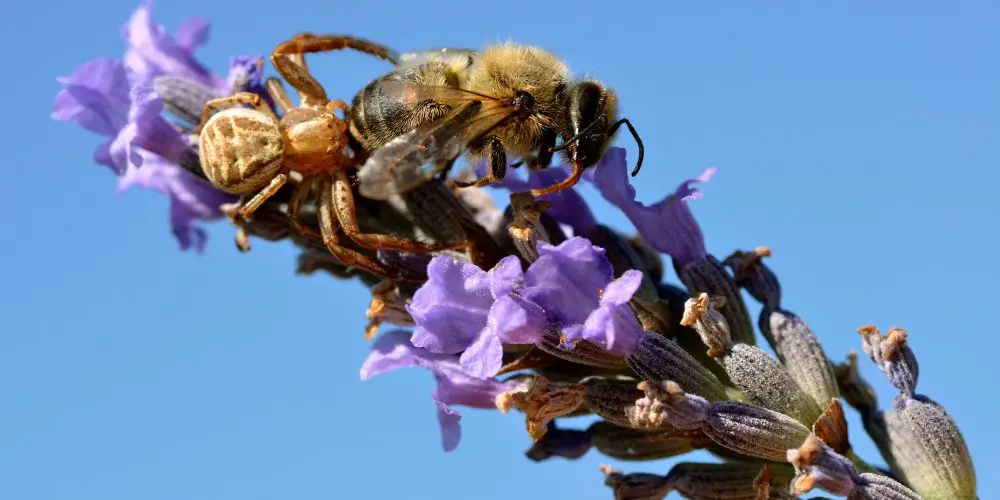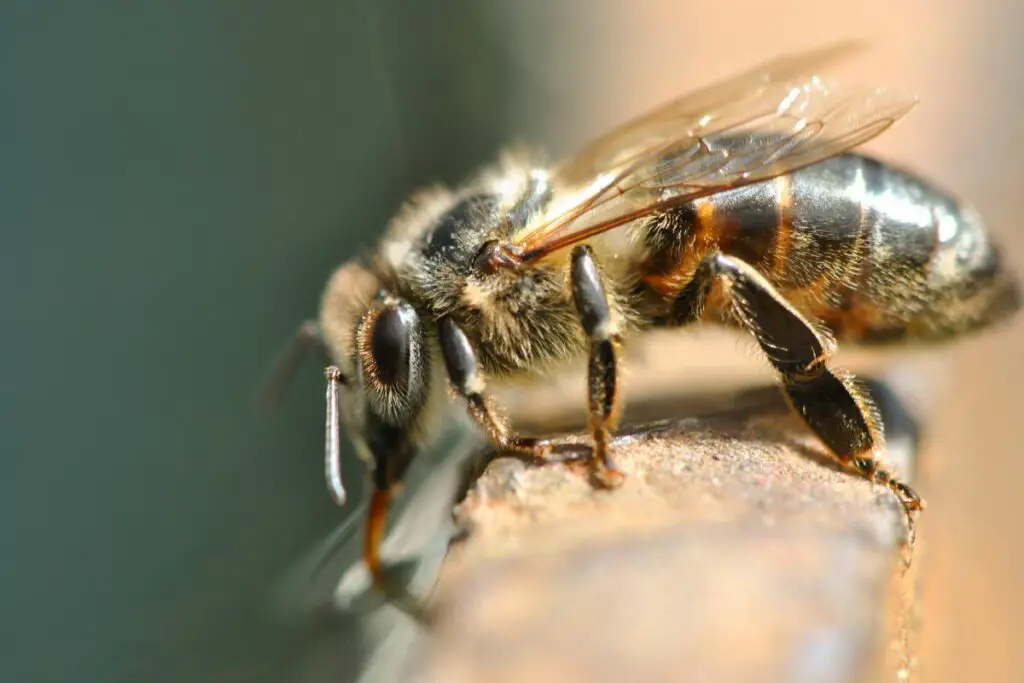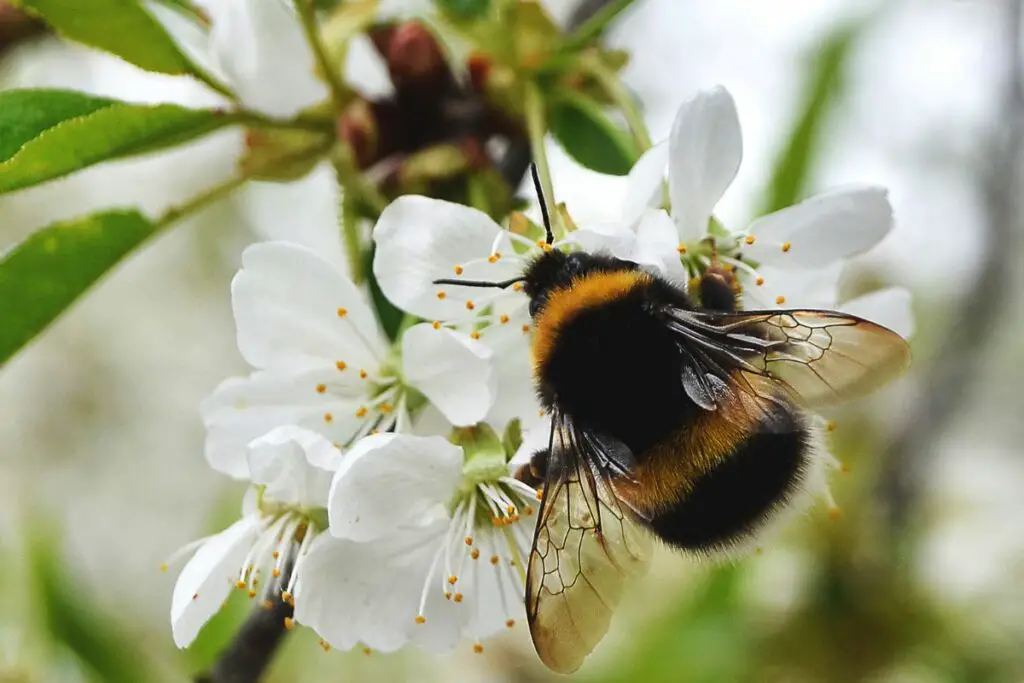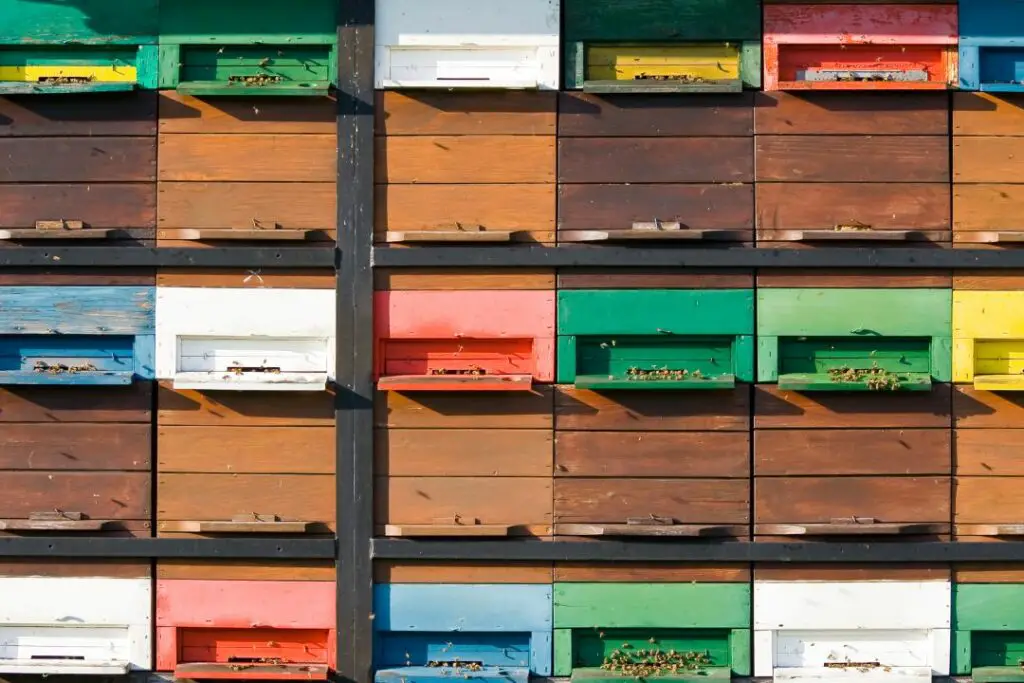Last updated on January 10th, 2024 at 01:00 pm
Bees face several natural predators in their nests and on their foraging trips. From birds and mammals to insects and arachnids, there’s no end to the potential dangers and predators bees encounter.
As gardeners and nature enthusiasts, it’s fascinating to understand the complex relationships between bees and predators and to work to promote healthy ecosystems that support a diverse range of species (predators included).
Join us as we meet the predators of bees, uncover their hunting strategies and gain a deeper appreciation for the intricate web of life and death surrounding us.
What Animals Eat Bees?
Before we get stuck into the specifics, let’s take a quick look at all the different kinds of animals that see bees or honey as a tasty snack.
- Birds – Bird species, like the bee-eater, the woodpecker, and the flycatcher, are known to feed on bees.
- Mammals – Some mammals, like the bear, the badger, and the skunk, have been observed eating bees and their larvae.
- Insects – Certain insects like the dragonfly and the robber fly are known to prey on bees and other flying insects.
- Arachnids – Crab and jumping spiders are known to feed on bees.
- Reptiles – The chameleon and the monitor lizard, have been known to eat bees and other insects.
Birds
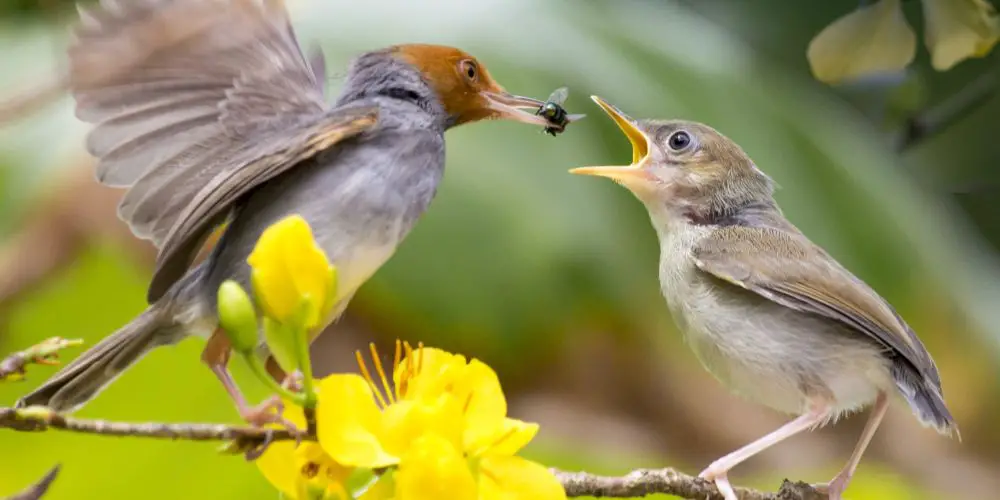
The relationship between bees and birds is an interesting one. While some may prefer other insects or fruits, others have developed a specialized taste for bees and hunting strategies to match.
One such bird is the bee-eater. As its name suggests, this bird specializes in hunting and eating bees.
The bee-eater is found in parts of Europe, Asia, and Africa and is known for its striking plumage, which features bright green, blue, and yellow feathers.
Its long, curved beak is perfect for catching bees in flight. It can consume hundreds of bees daily, using its sharp beak to remove the stingers before swallowing them whole.
Others, like woodpeckers and flycatchers, may not specialize in hunting bees, but they will take advantage of any unfortunate bees that cross their path.
Woodpeckers, in particular, are known for digging up bee nests where they can feed on the nutrient-packed larvae and the bees themselves.
Despite the predatory relationship between bees and birds, it is essential to recognize each species’ role in the ecosystem.
Please find out more about the fascinating world of predators in our article. Which animals eat butterflies?
Mammals
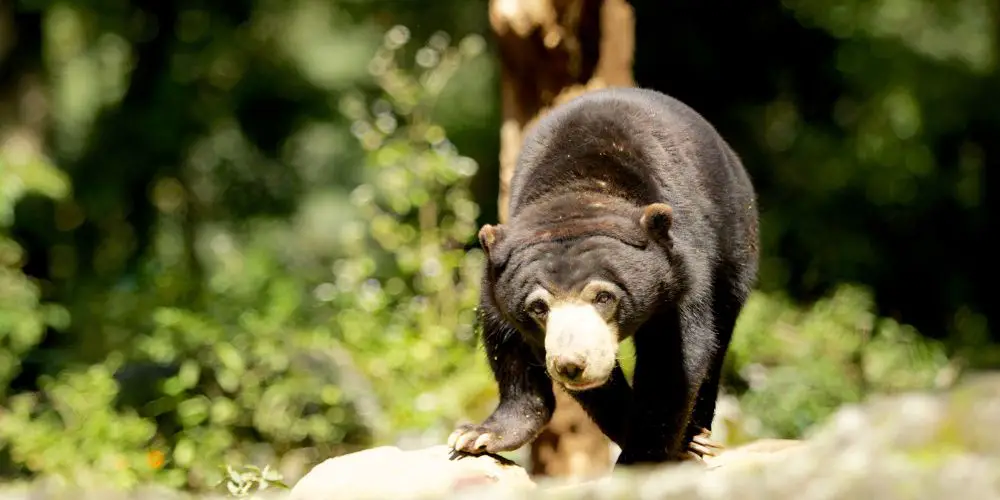
Mammals like rodents and rabbits may occasionally consume bees as part of their diet, but a few mammals out there are pros at feeding on bees and their nests.
Bears regularly eat bees and their larvae, often raiding bee hives searching for honey.
They use a combination of powerful claws and strong jaws to open the hives and consume the honey and bees within.
Honey provides a massive calorie intake if a lucky bear can find some, so it’s a perfect meal before hibernation. Here’s a young cub getting his first sweet taste.
Our second culprit is the Badger. Badgers are skilled diggers. They’ll dig up bee nests to feed on the honey and larvae inside.
They’re particularly adept at locating and accessing nests, using their powerful forearms and claws to dig and firm jaws to break open the nest.
While they are primarily insectivores, Skunks will take advantage of the opportunity to consume bees and other flying insects when possible.
They’re particularly fond of honey bees and may raid hives for their sweet reward.
Insects
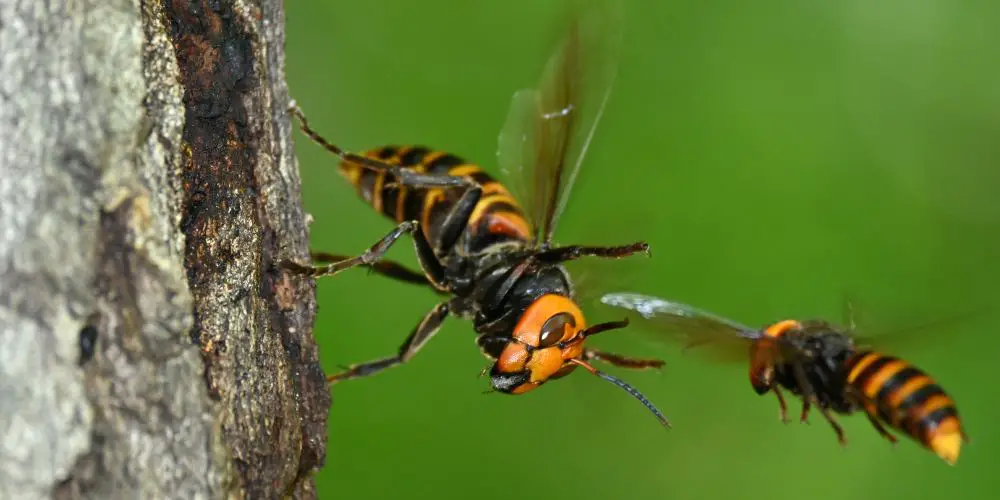
Many insects will happily hunt, kill and consume unsuspecting bees.
Dragonflies are fast and agile fliers that can catch bees and other flying insects in mid-air. They have sharp mandibles that they use to crush and consume their prey.
They’re viciously territorial and quickly dispatch any bees they see getting too close.
Robber flies have large eyes and powerful legs, which they use to catch and immobilize their prey. After the bee is caught, the robber flies inject a paralyzing venom, letting it consume the bee at its leisure.
Hornets are notorious bee killers able to dispatch hundreds of bees in no time. Here’s a video highlighting their deadly assault.
Other wasp species, such as the cicada killer wasp, are also known to prey on bees. They have powerful jaws that they use to capture and kill their prey.
Arachnids
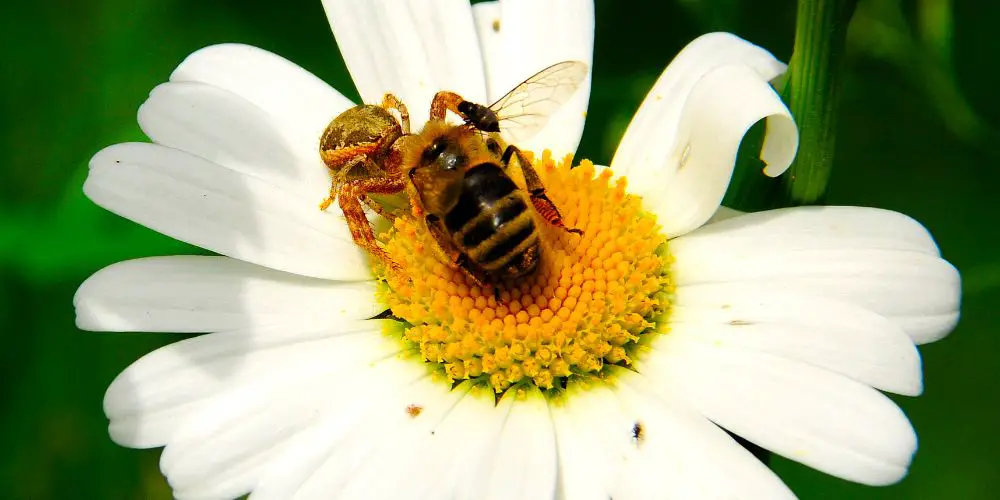
Arachnids are better known for terrifying humans than consuming bees, but that doesn’t mean they don’t.
Spiders and scorpions are not as common as other bee predators, but that doesn’t make them any less of a threat if they do attack.
Intricate webs trap flying insects, including bees. Once caught in the web, the spider will immobilize the bee with its venomous bite and consume it.
Scorpions, conversely, are nocturnal predators that hunt by sensing vibrations in the ground.
They prey on a variety of insects, including ground-dwelling bees. After they find a nest, they’ll attack with powerful pincers and a venomous sting to subdue and consume any bees unfortunate enough to cross them.
*Additional reading – Don’t miss our deeper look into the spiders that kill and eat bees.
Reptiles
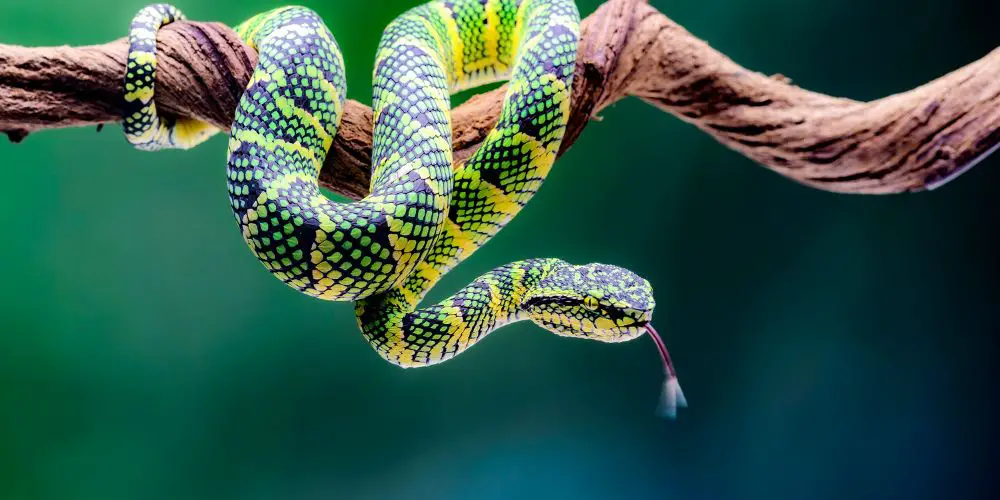
Last but not least, Reptiles are another group of animals that dine on a bee or two.
They’re not typically considered significant bee predators, but these reptiles will strike if given the chance.
Lizard species are fast and agile, making them skilled hunters of any flying insects. They catch bees in mid-air, using their lightning-fast reflexes.
While they are primarily carnivorous, some snake species have been known to consume bees if they happen to find a nest.
The mangrove snake, in particular, is known to stalk and kill bees and other insects inhabiting the mangrove forests.
Turtles and tortoises may also occasionally consume bees if they come across a hive on the ground.
These reptiles have strong jaws capable of crushing the hard outer shell of the bee, allowing them to consume the soft inner parts.
Animals That Eat Specific Bee Species
As with much of the food chain, different animals have their preferred prey species.
And this is true for bees as well. Let’s meet some animals that have specialised in consuming one kind of bee over all the others.
What eats honey bees?
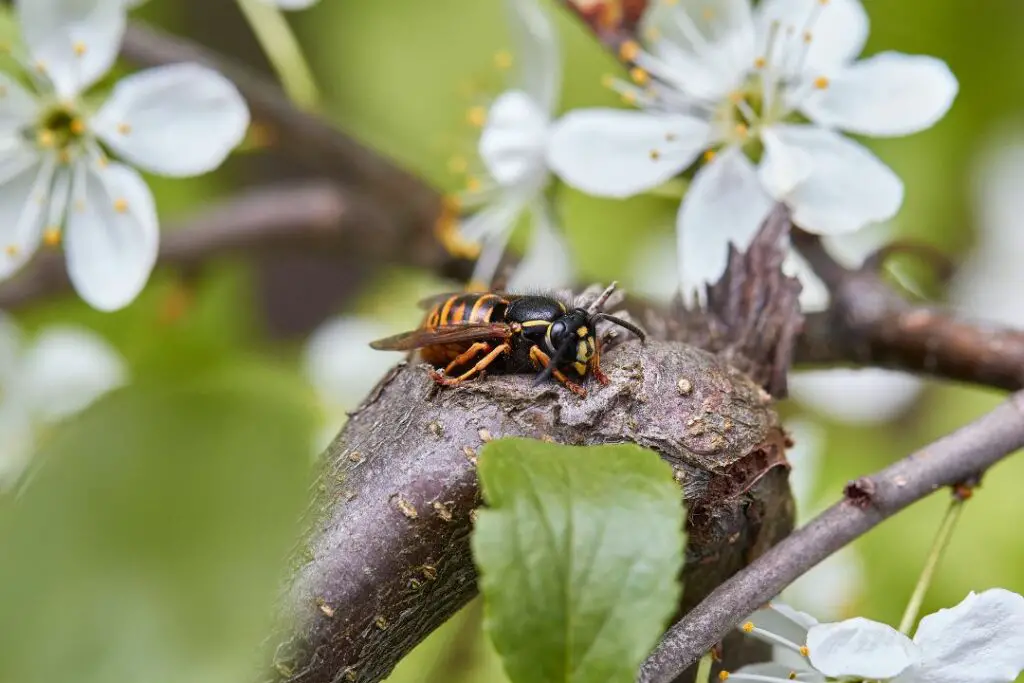
- European Hornet (Vespa crabro)
The European hornet is a giant wasp native to Europe, though it can now be found in parts of North America.
These hornets are known to prey on honeybees, capturing them mid-flight or attacking their hives.
They often decapitate the bees and carry the thorax back to their nest to feed their larvae. Talk about a gruesome end.
Animals that eat bumble bees?
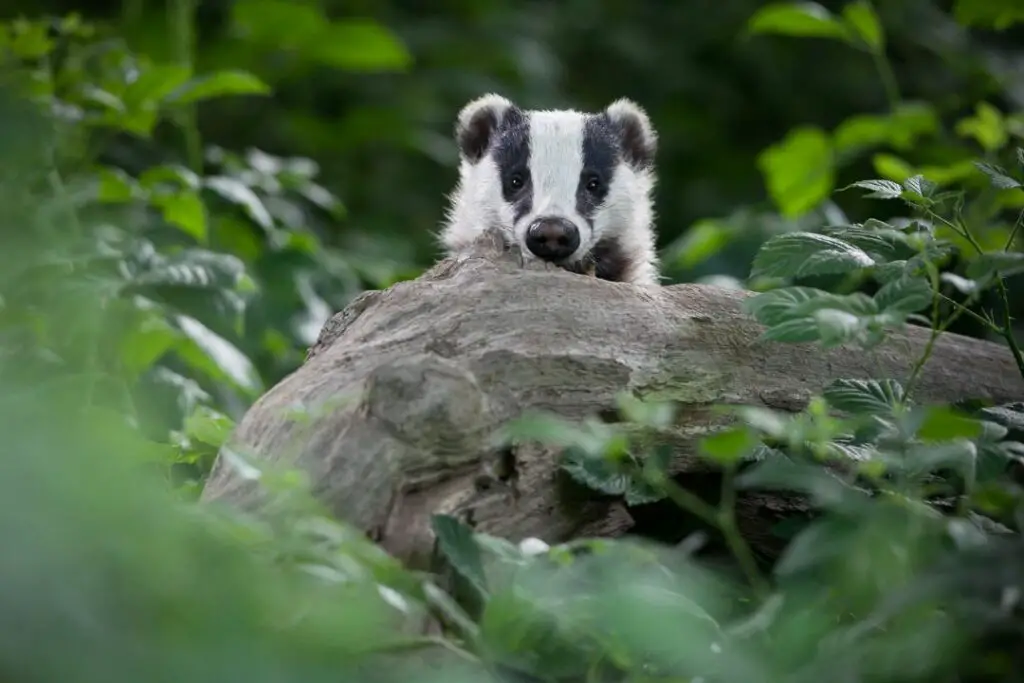
- Badgers (Meles meles)
Badgers are nocturnal mammals known to dig up bumblebee nests to feast on the bees and their larvae.
They have a keen sense of smell, which helps them locate the nests, and their thick fur and skin provide some protection against bee stings.
What eats ground bees?
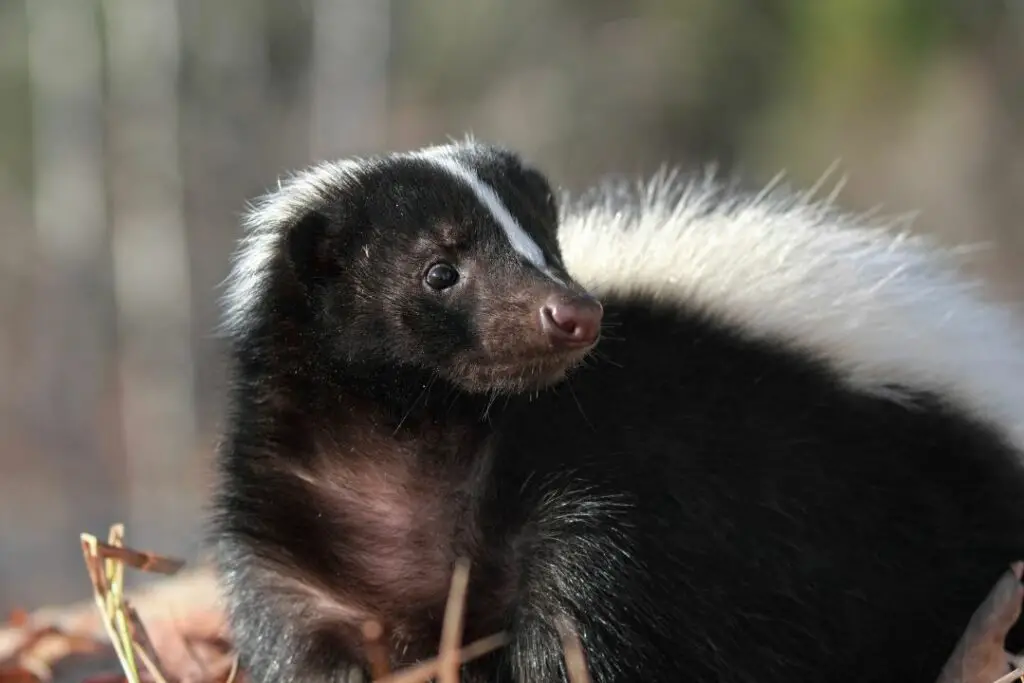
- Skunks (Mephitis mephitis)
Skunks, with their distinctive black and white stripes, are notorious for their pungent spray.
But they’re adept at locating and digging up ground-nesting bee nests.
They’ll excavate the nests at night, consuming the bees, larvae, and honey stores. Their thick fur offers some defence against the stings of the bees.
What eats bees and wasps?
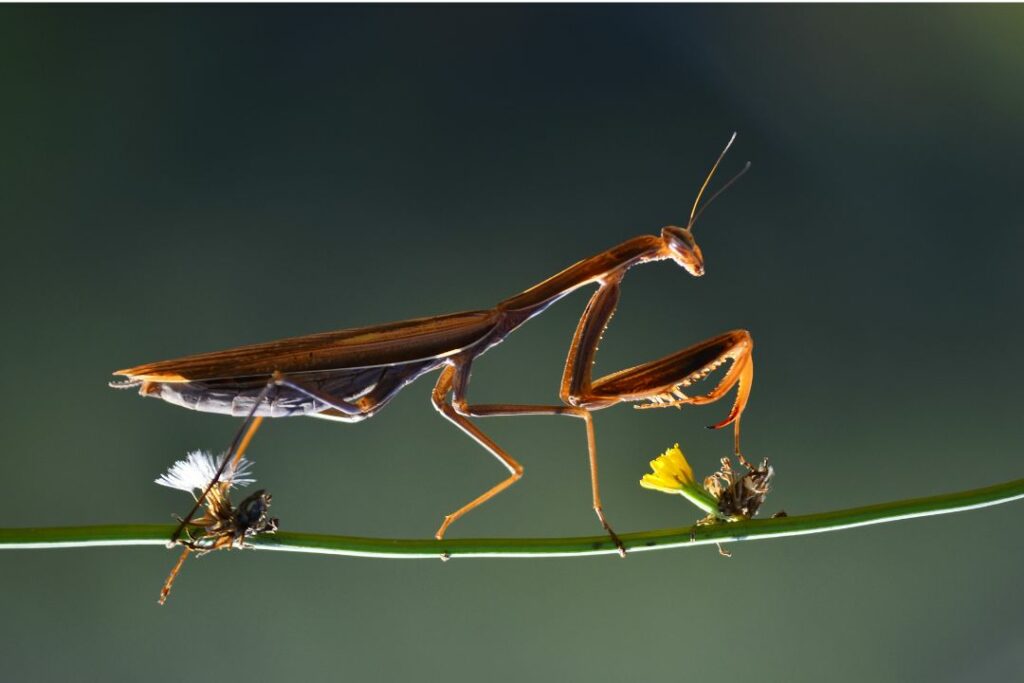
- Preying Mantis (Mantis religiosa)
This is easily one of the most terrifying predators of bees.
With its alien appearance and saw-like forearms, this garden stalker is a death sentence for any bees or wasps that cross its path.
They’re ambush predators that use excellent camouflage and stealth to approach unnoticed.
The mantis strikes quickly when the prey comes within range, relying on its lightning-fast reflexes to capture bees and wasps in mid-air or when they land nearby.
The spiky forelimbs grasp and immobilize their prey before consuming them with their sharp mandibles.
*Wasps and bees – Find out more about their relationship in our short read – Do wasps kill and eat bees?
Conclusion
Understanding the predators that prey on bees is essential for any beekeeper or gardener looking to protect their precious pollinators.
While it can be disheartening to think about the potential threats facing our bees, it’s important to remember that animals that predate on bees play a vital role in our ecosystem and deserve our protection.
So, let’s do our part to protect these amazing creatures and the vital work they do for our planet!

